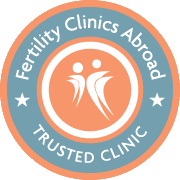Use and misuse of statistics in the IVF sector
by Dimitrios Dovas, last updated 14 Sep 2018,
6 min read
There has been a lot of discussion over the last few years and moreover so recently regarding the accuracy of success rates following IVF treatment, as they are reported by various fertility clinics all over the world. For example, you can take a look at the articles by Independent or DailyMail.
What many people fail to recognize is that the same numbers presented in a different manner may lead to totally different conclusions. This might happen either intentionally or by accident.
There are various statistical ways to report the treatment outcome following fertility treatments. Some of the most commonly used are:
- Pregnancy rate (%): It shows how many women become pregnant (have a positive pregnancy test) following IVF treatment, per 100 treatments.
- Clinical pregnancy rate (%): How many women show evidence of pregnancy by ultrasound parameters (gestational sac, fetal heartbeat) following fertility treatment, per 100 treatments.
- Live birth rate (%): Number of live-birth deliveries expressed per 100 treatment cycles. Live birth is defined as the delivery of a fetus with signs of life beyond 20 weeks of gestation. Multiple births (twins etc.) are considered single birth events.
It is obvious that the best way to report the results is by using the live birth rate. In some cases, it is difficult to do so, as in many cases people are lost to follow up because they fail to report the pregnancy outcome to the IVF clinic. Therefore, many of the IVF centres report pregnancy rates or clinical pregnancy rates.
It is important to specify when reporting success rates what the main denominator is, as there are huge differences when rates are expressed per treatment cycle started, as opposed to per aspiration or per embryo transfer.
Clinics that treat older women have high cancellation rates, as many of these women fail to reach an embryo transfer due to poor egg quality. If these clinics report results per initiated treatment cycle, all results will not be comparable to a clinic which treats young women and has an almost non-existent risk of cancellation.
Additionally, many clinics report cumulative pregnancy rates. This means that the results do not refer to a single treatment cycle but to several back-to-back treatments (usually 3). As expected with such a faulty reporting system success rates can be significantly inflated.
People need to know that there is a large number of factors that may affect the end outcome either positively or negatively. The most important of those are highlighted below.
Factors affecting the IVF outcome
Age group of the patient: It is well known that as the female partner gets reproductively older the chances of success decline. This is because the egg quality is lower and as a result implantation rates may be severely affected. So, when reviewing a clinic’s results, you need to look at the age distribution of the population treated. Some clinics do not offer treatment to women of advanced age groups which leads to increased overall success rates. The ideal way to present data is per age group of the patients treated, so one can draw conclusions for the specific age group. Additionally, each group should include a relatively substantial number of treated women, so the results are statistically significant.
Number of embryos transferred: It has become an almost standard practice in our era to offer single embryo transfers, particularly in women of young age. The reason to do so is to minimize the risk of a twin pregnancy which may affect negatively the reproductive outcome (delivery of a healthy baby). The consequence of an elective single transfer policy is lower chances of success and this reduction varies depending on the age group of the woman. Clinics transferring many embryos might have higher success rates in terms of achieving a pregnancy but sometimes this comes along with a worse reproductive outcome (miscarriages, preterm deliveries etc.).
Preimplantation Genetic Testing (PGTA) of the embryos: It is widely accepted that a substantial number of embryos could be genetically abnormal. Most of these embryos fail to implant following embryo transfer. So theoretically selecting genetically healthy embryos to replace back in the womb could improve the chances of conception. Wide adoption of this policy could, therefore, boost pregnancy rates in some cases. The downside of genetic testing is the increased risks of harming a healthy embryo during the process as well as the increased costs associated with the procedure. Clinics offering routinely PGTA might report significantly higher pregnancy rates, particularly in women of older age groups.
Type of IVF treatment (own eggs vs donated eggs): If a woman is in her late 40s, the chances of conception following fertility treatment are quite low, but this applies only when using her own eggs. If the same woman has treatment with donor eggs, then the chances could be extremely higher. So, when reviewing results, it is of utmost importance to identify the type of treatment these results refer to. In cases of egg donation, the final outcome may be affected even by the type of the donor eggs used (fresh vs frozen), as generally fresh donor eggs seem to perform better.
Generally, plain statistical clinic reports should not be used for comparing clinics. Clinics may have differences in patient selection, treatment approaches, and cycle reporting practices, which may inflate or lower pregnancy rates relative to another clinic.
Greece is one of the countries that the National Authority of Human Reproduction (like HFEA in the UK and SART in the USA) is responsible for assessing the performance of IVF clinics as well as their reporting system and all statistical data are reported annually to the European Society of Human Reproduction (ESHRE).
I feel that it is our responsibility as fertility specialists to explain thoroughly to our patients the chances of them having a successful outcome following a certain treatment approach. We are in the era of individualized treatments and this includes individualized assessment of the chances of success. Here at Newlife IVF Greece our team will assess your case thoroughly and will provide you with reasonable recommendations for your fertility problem, backed by the latest scientific data. You can contact us directly or schedule a Skype consultation session with our medical team at the time of your preference.

Dimitrios Dovas, MD, DFFP
Dimitrios is the Clinical Director of Newlife Center of Reproductive Medicine, in Thessaloniki Greece and is also responsible for all international patients.









